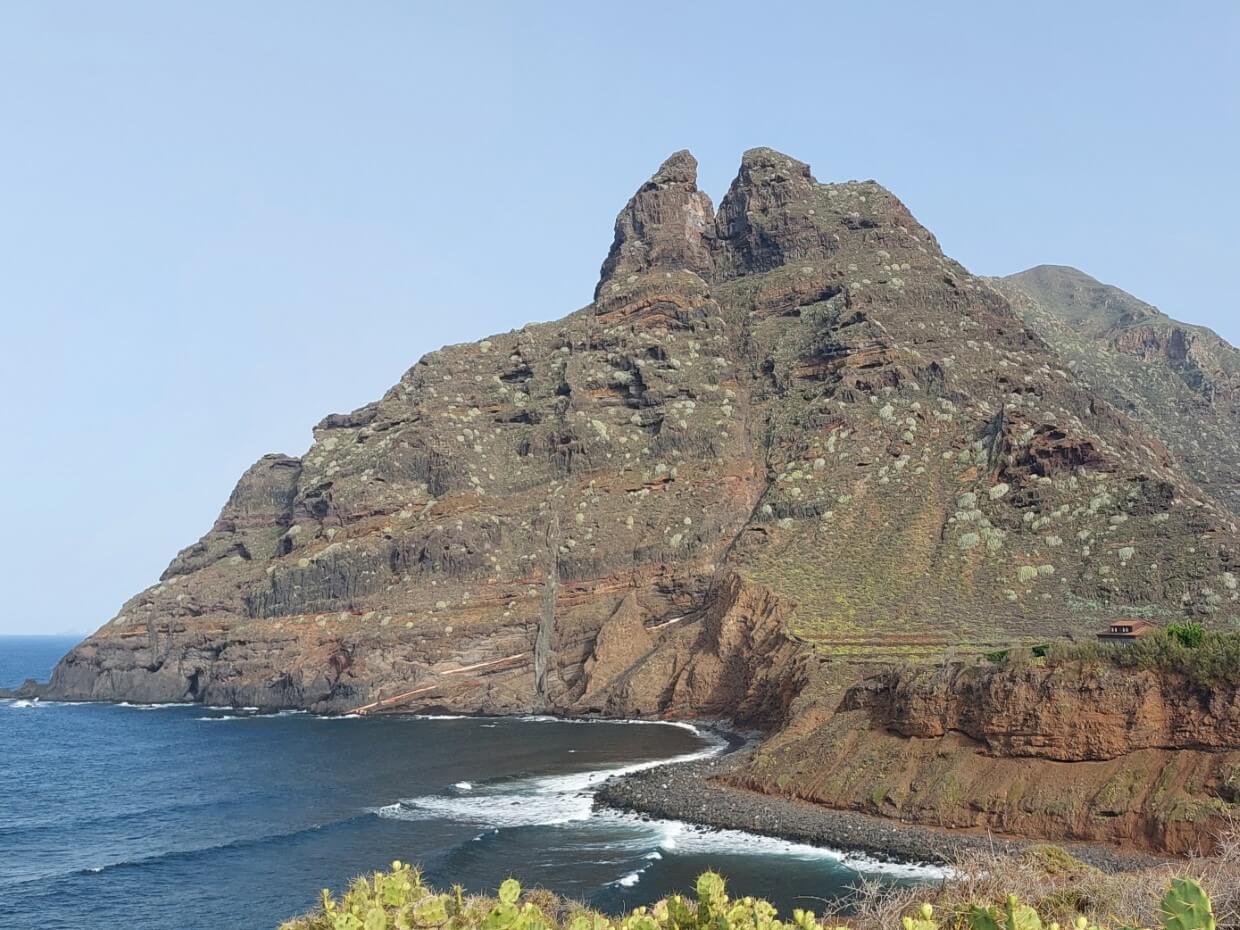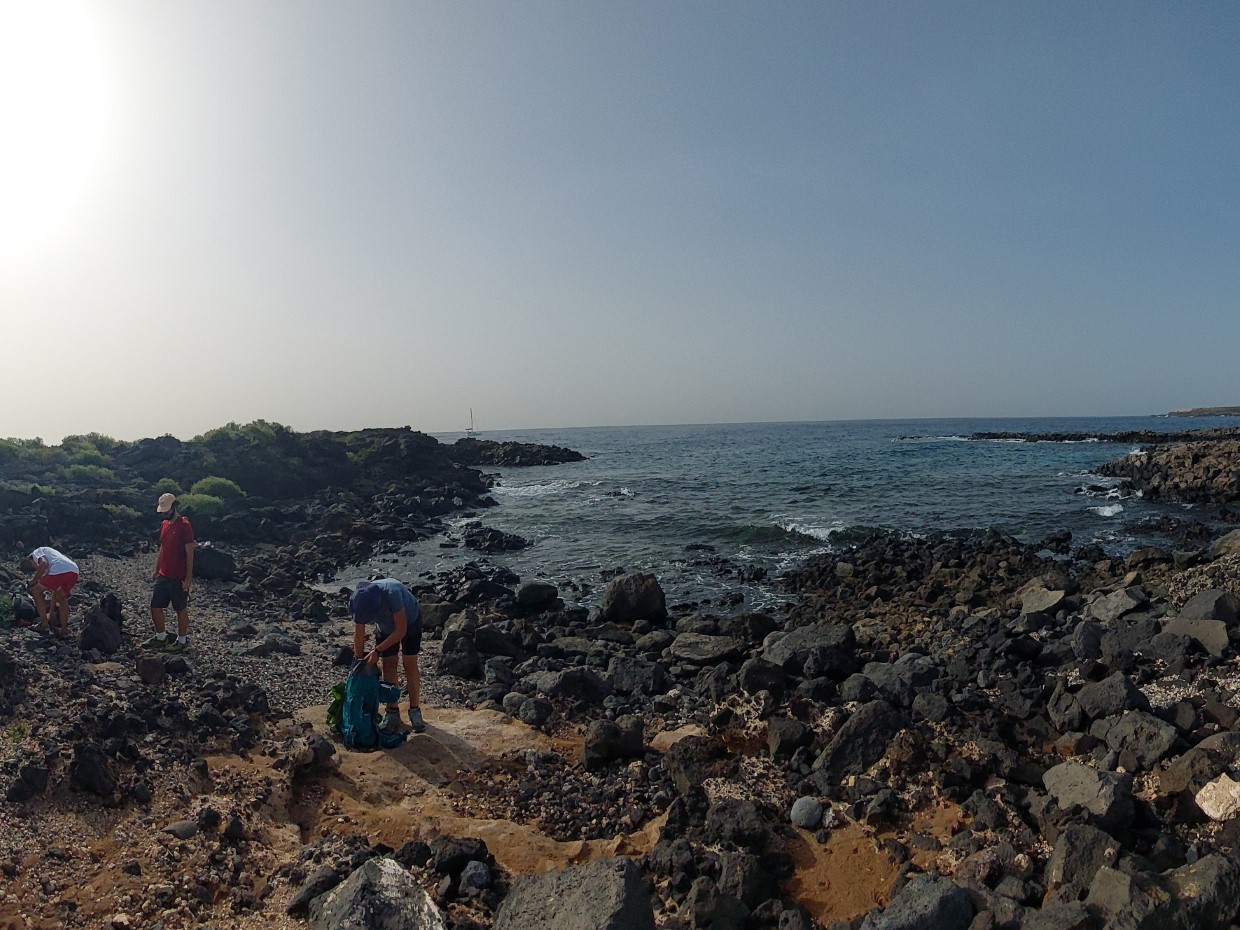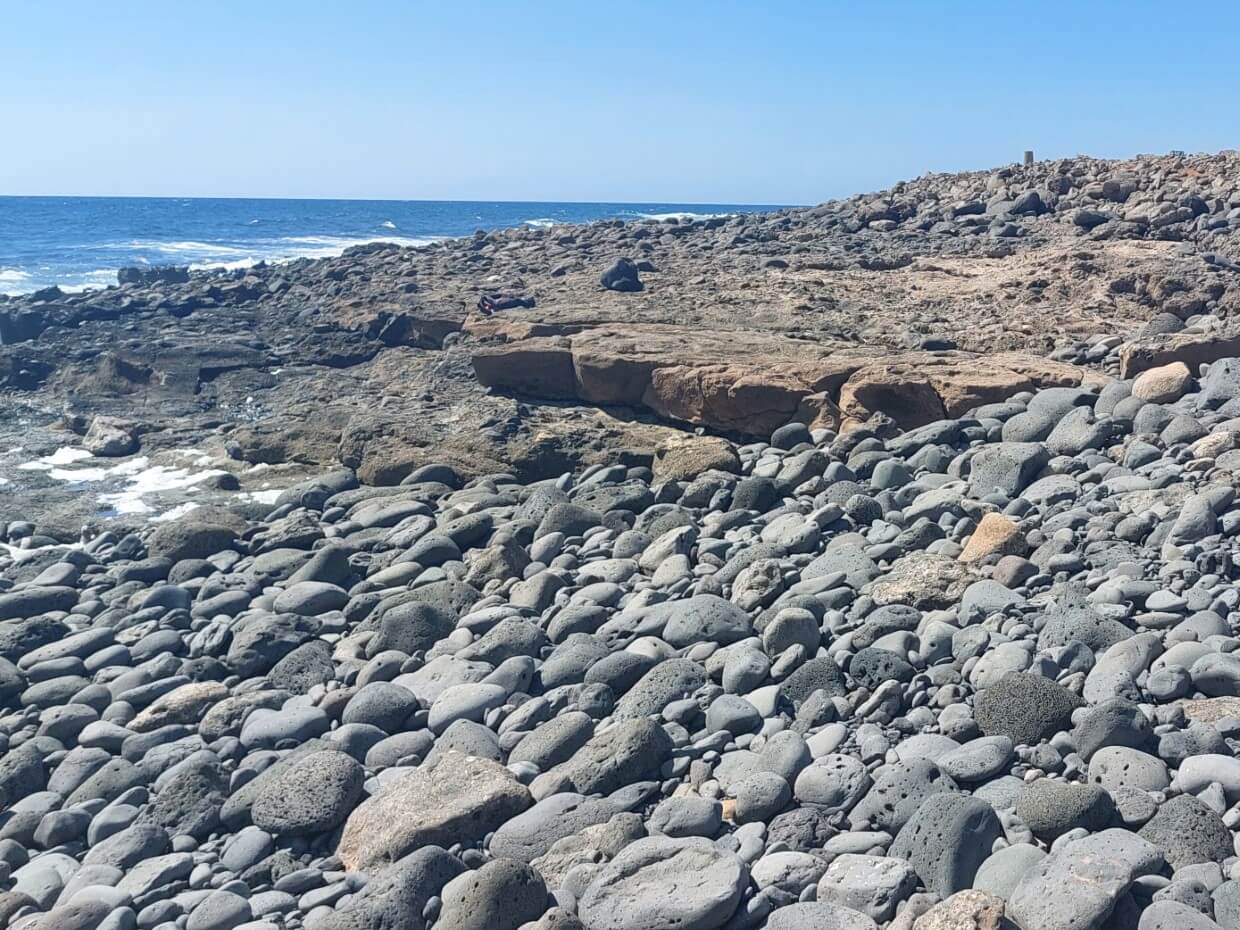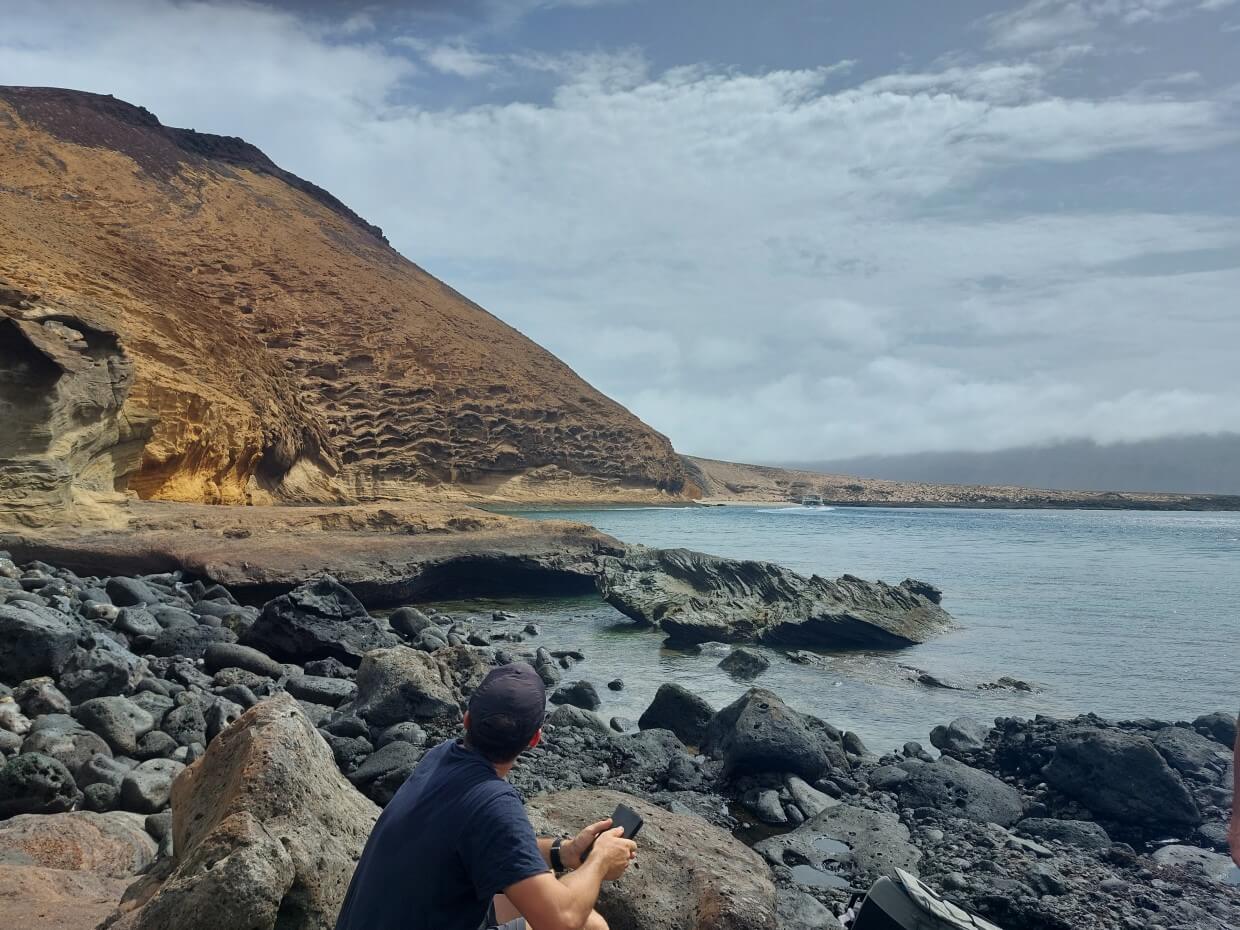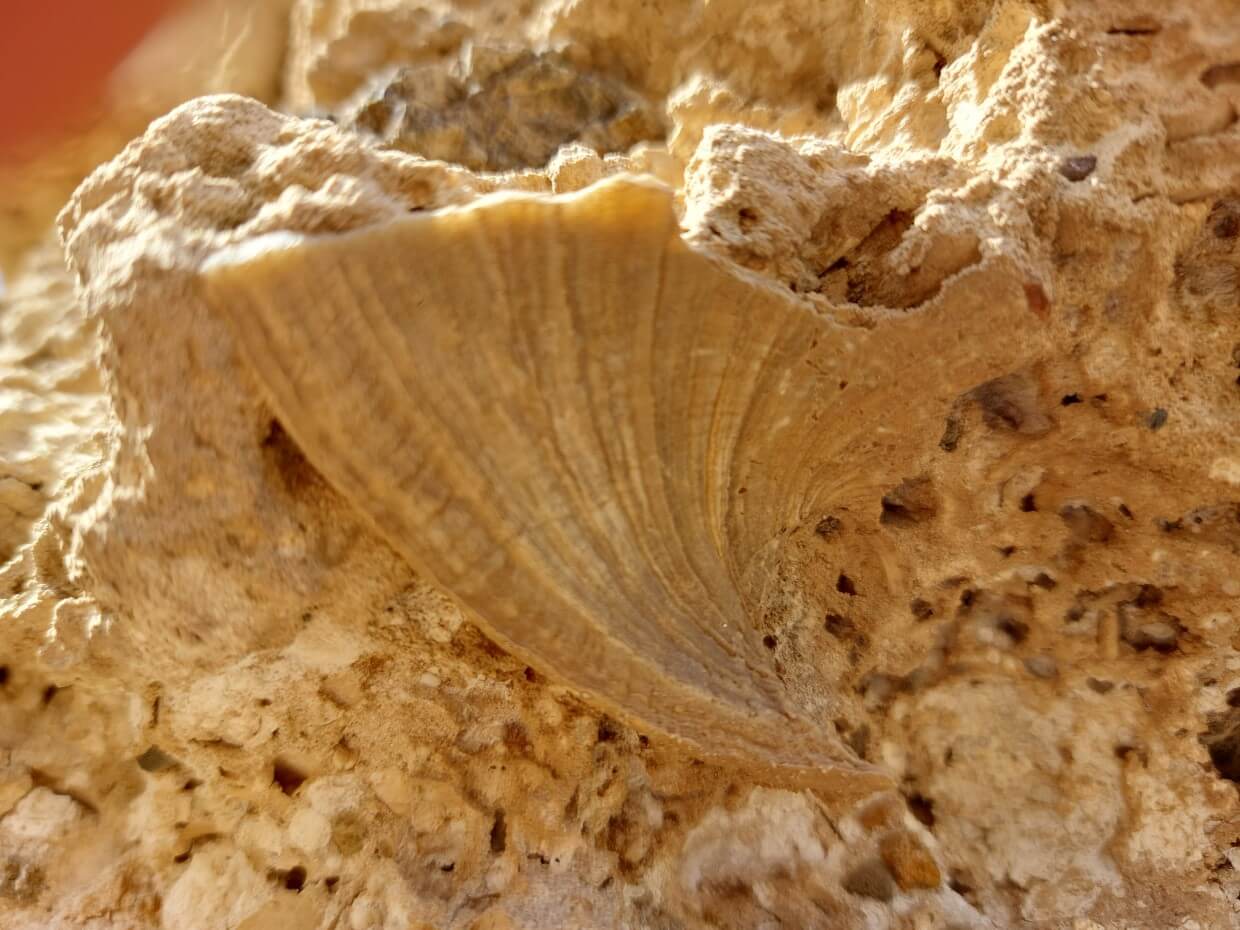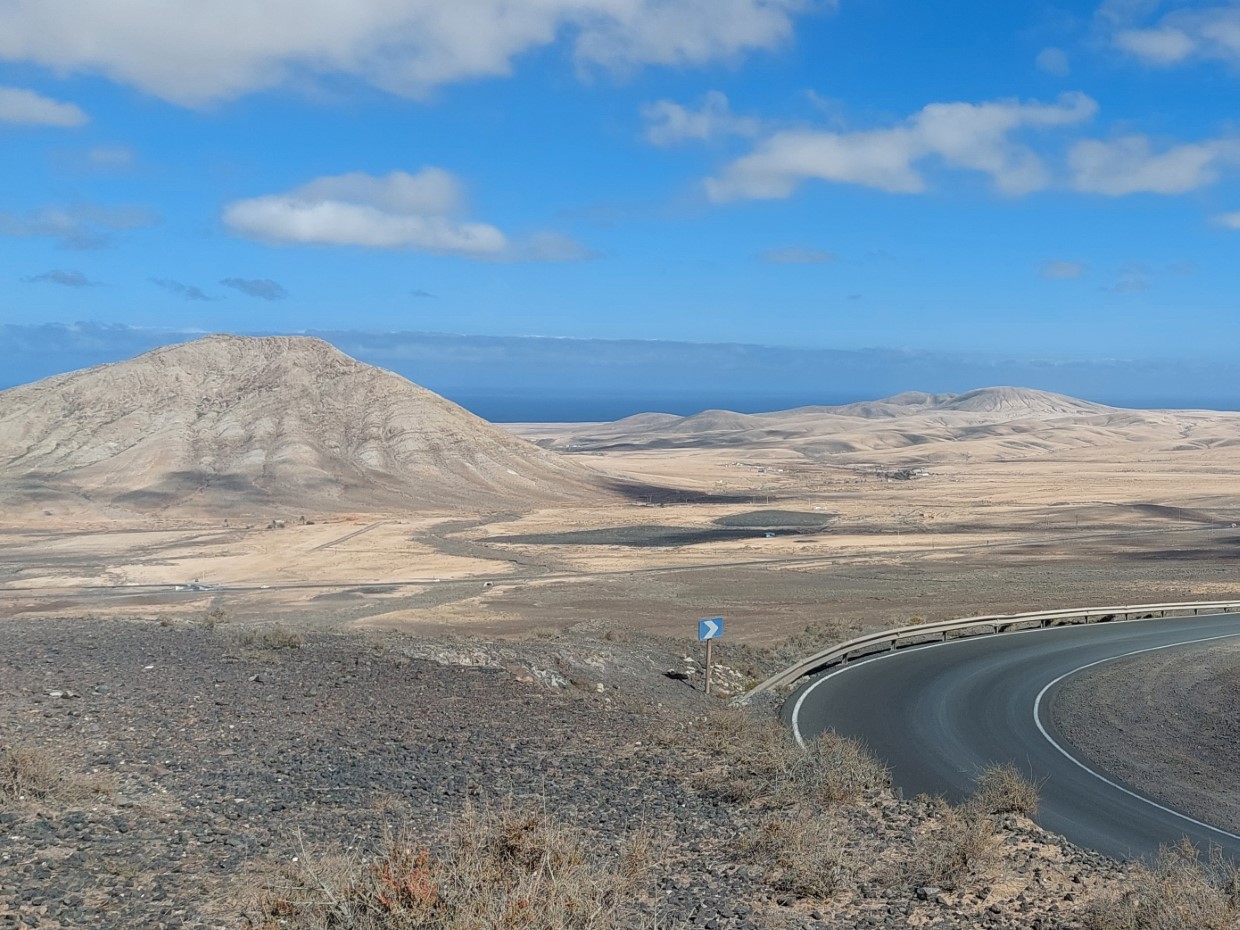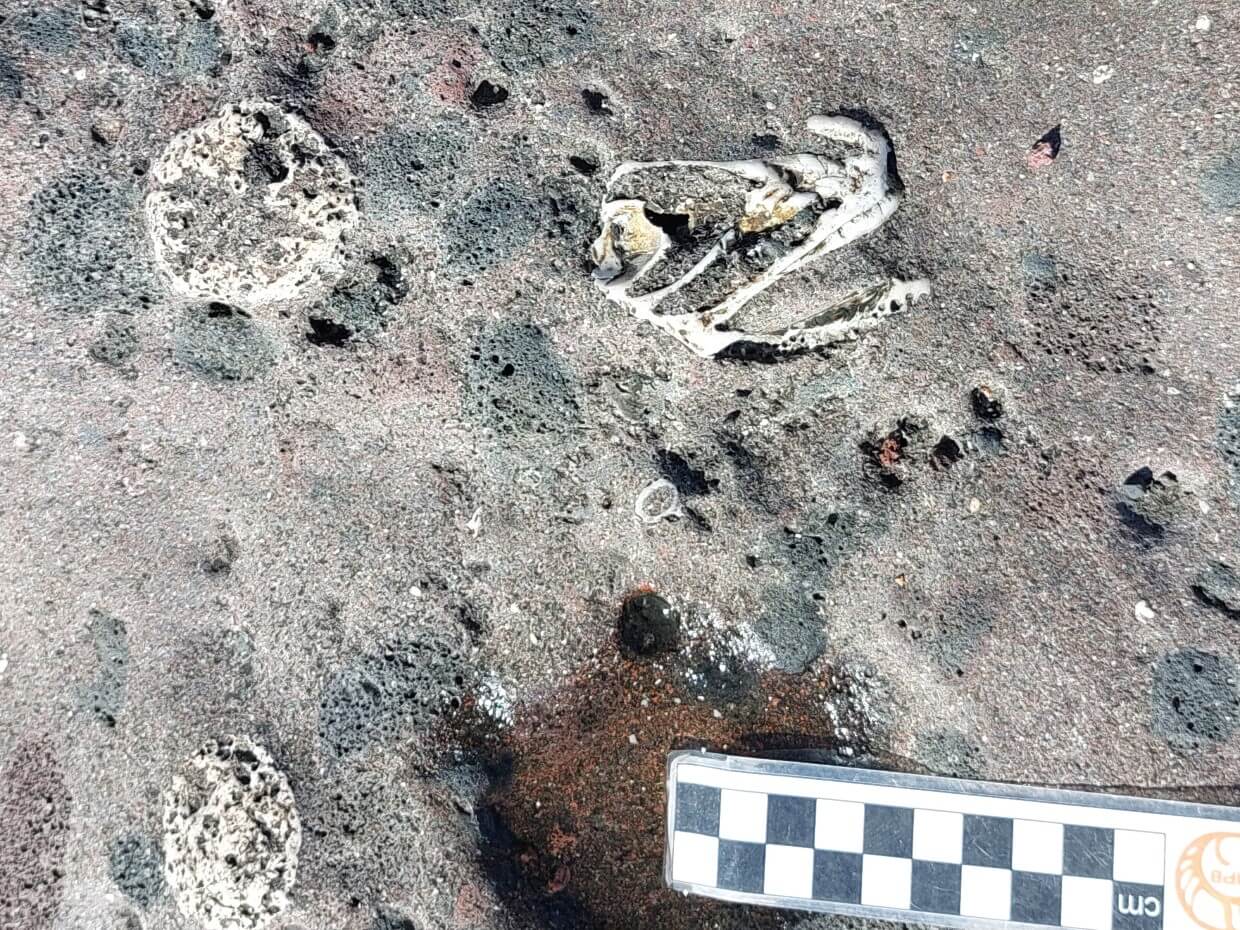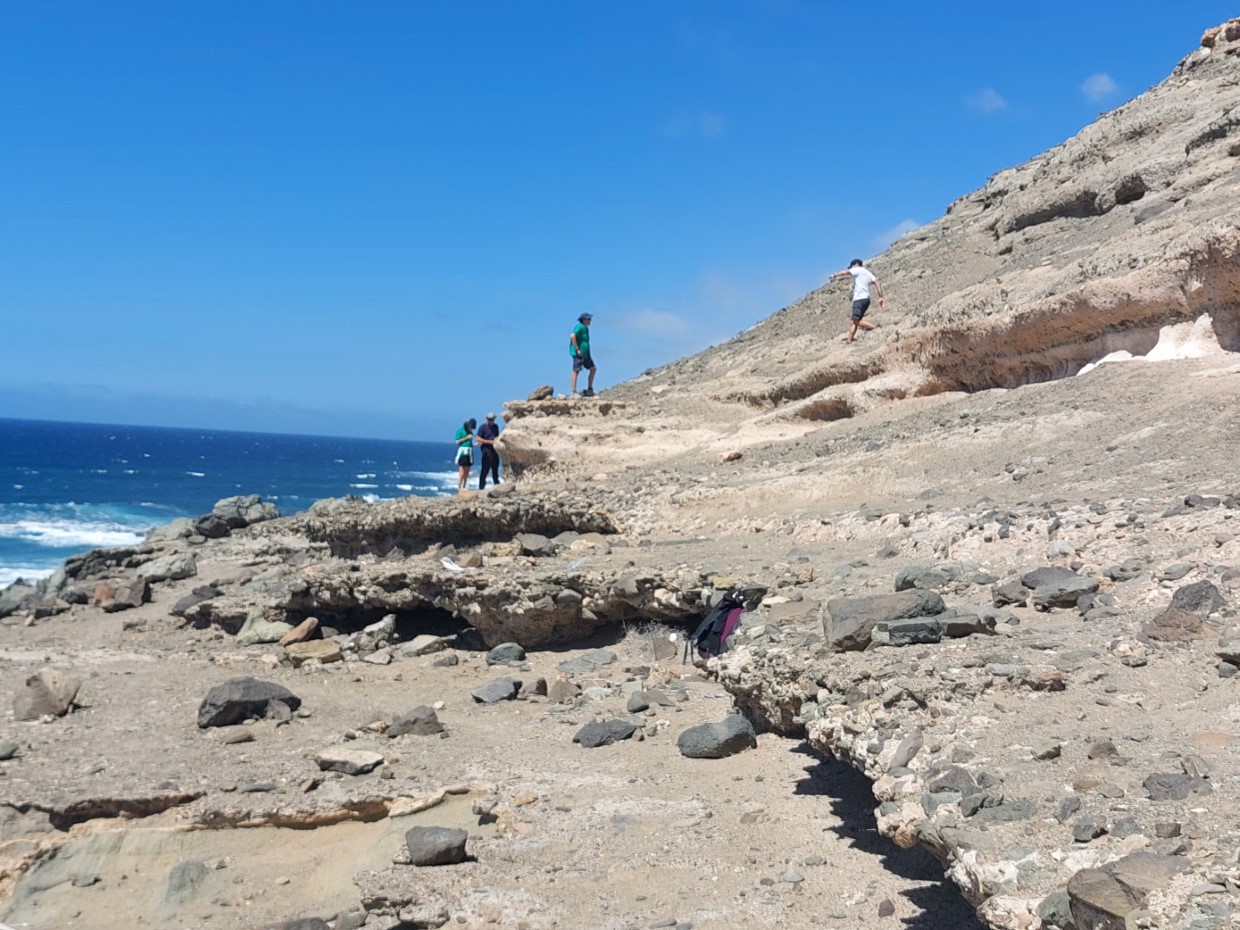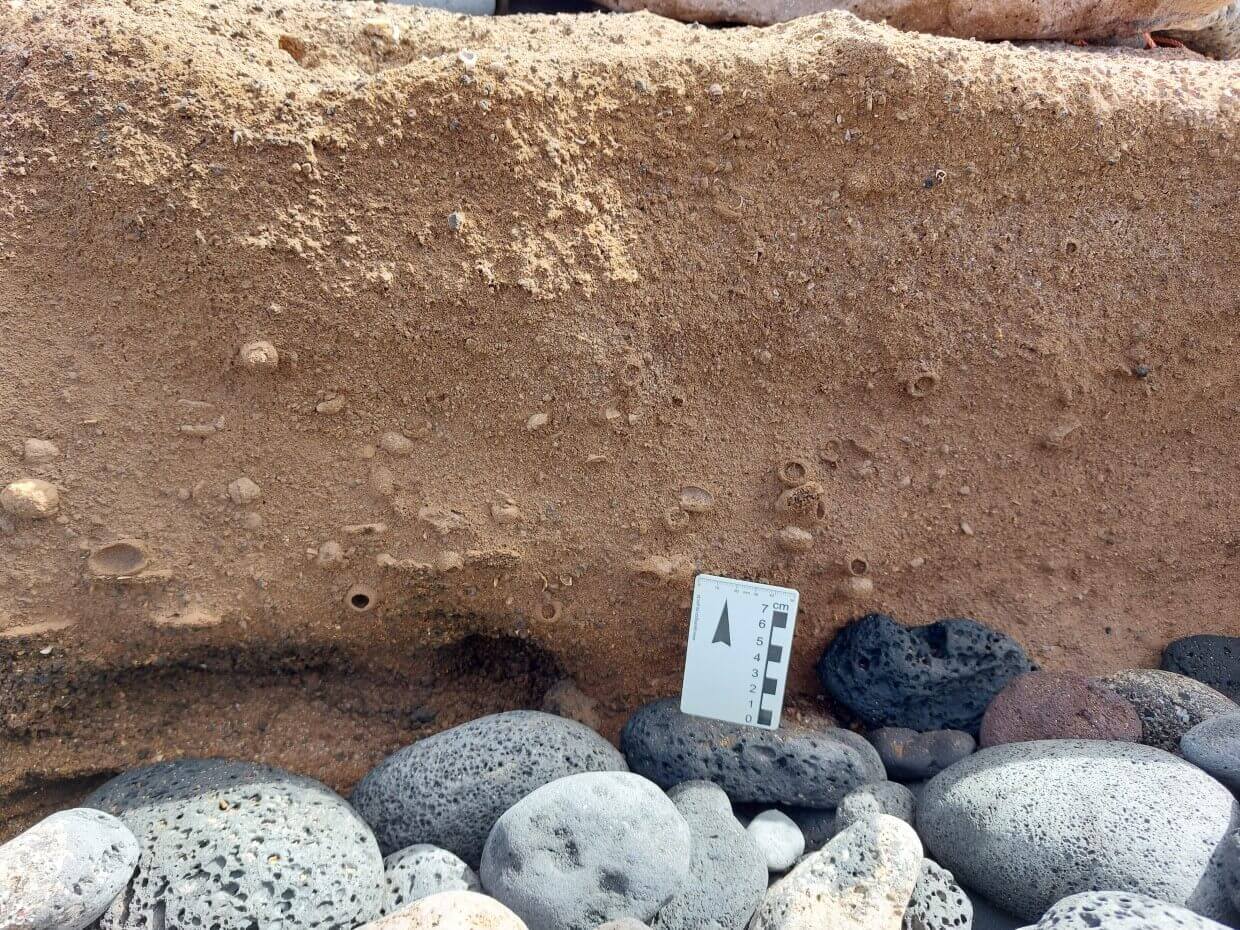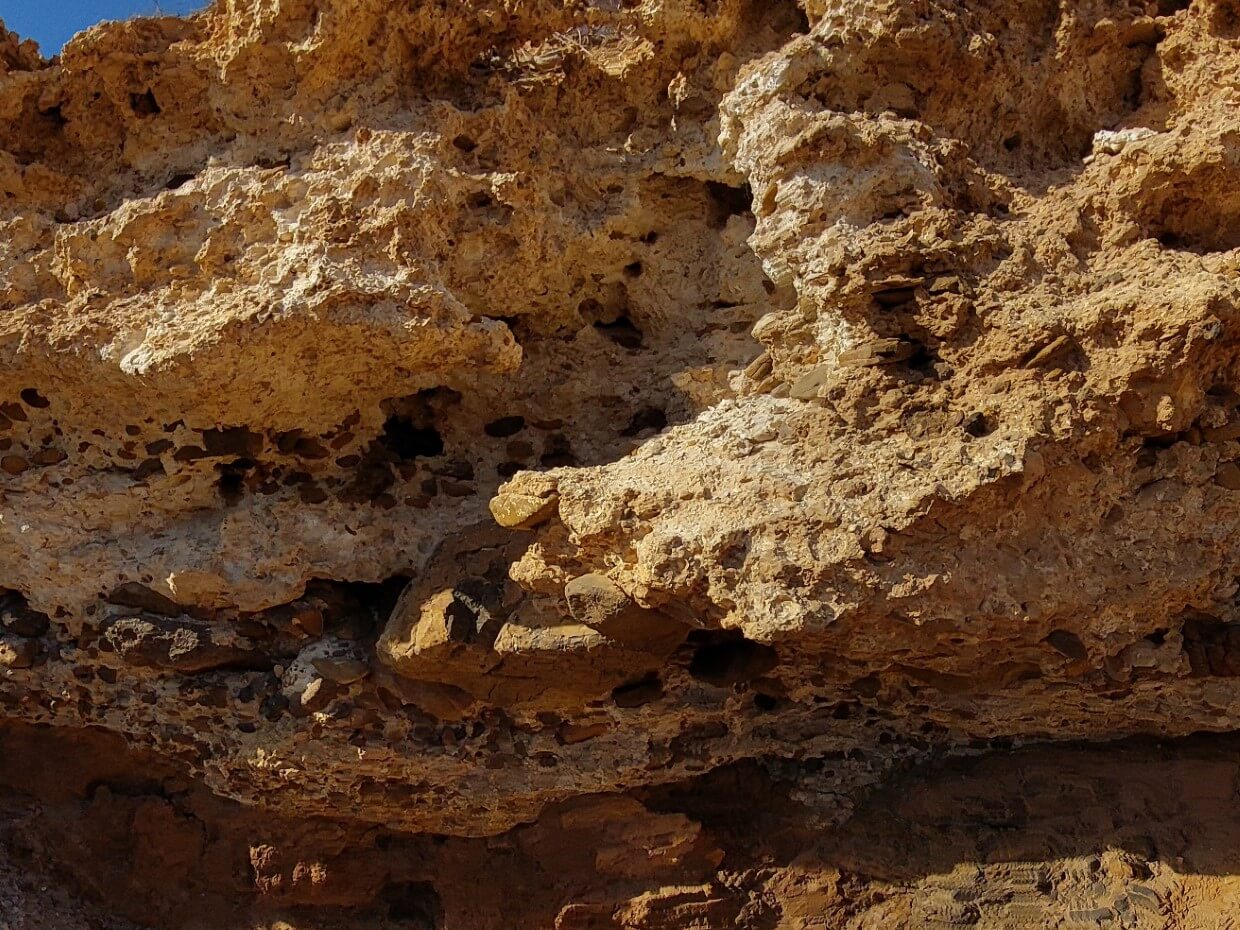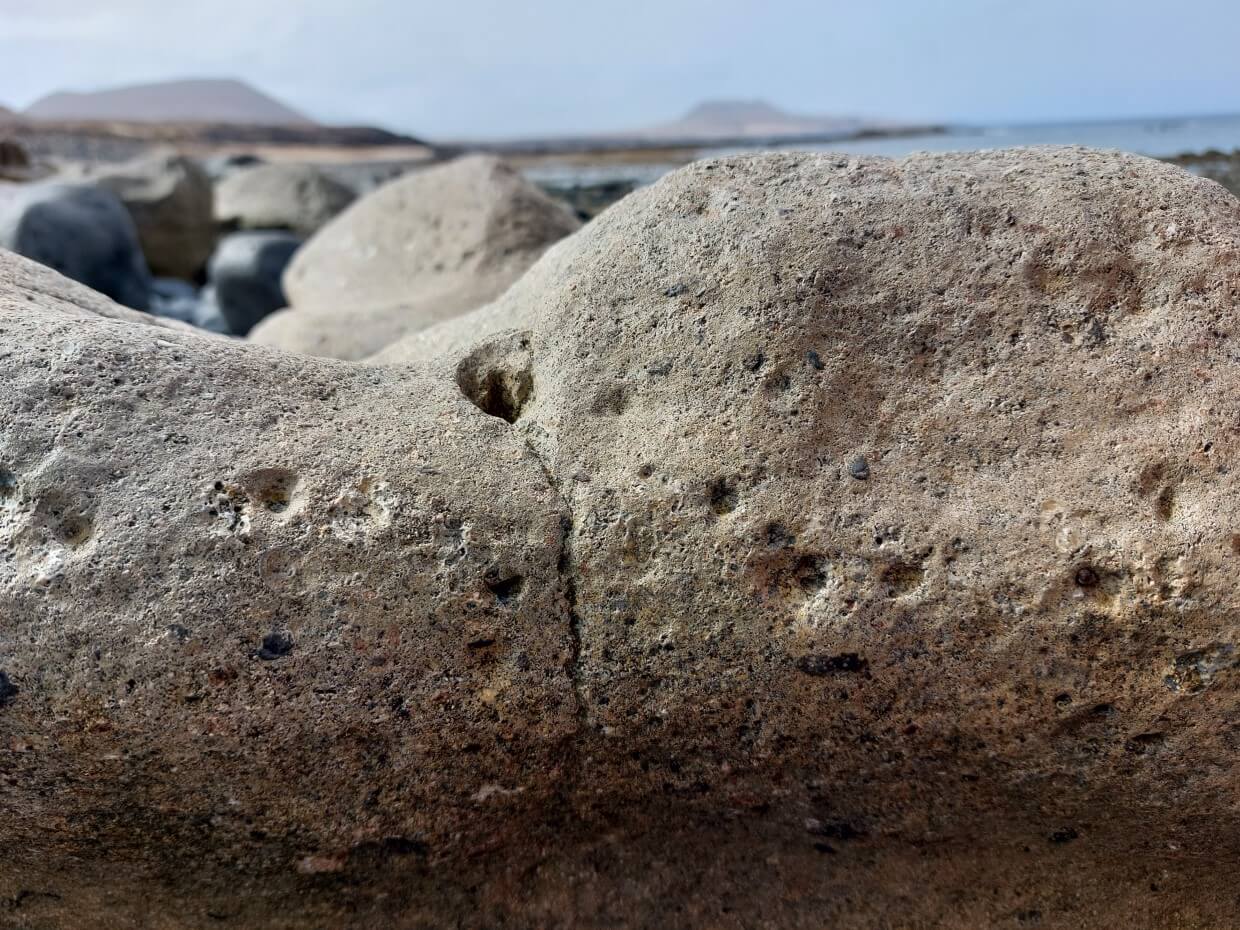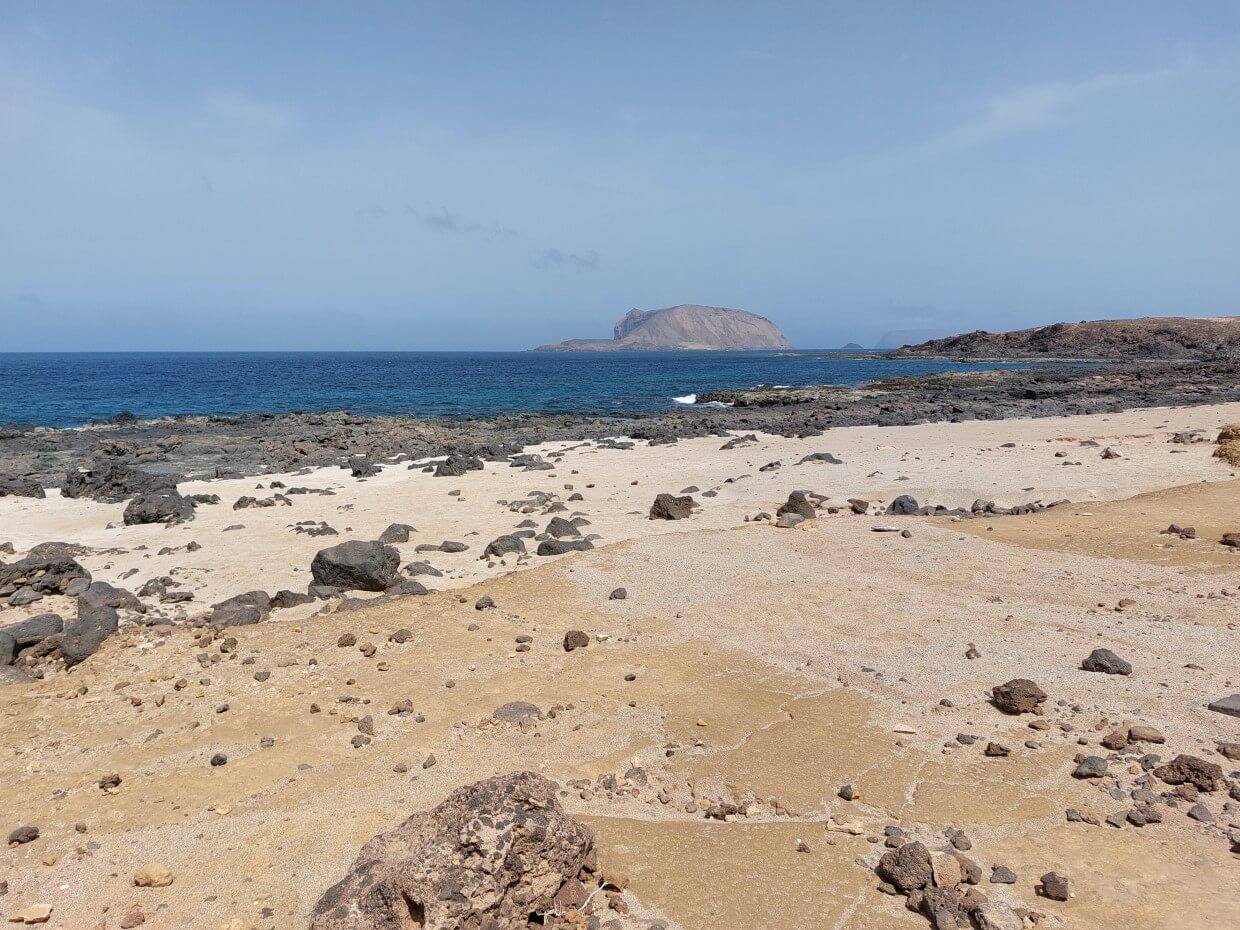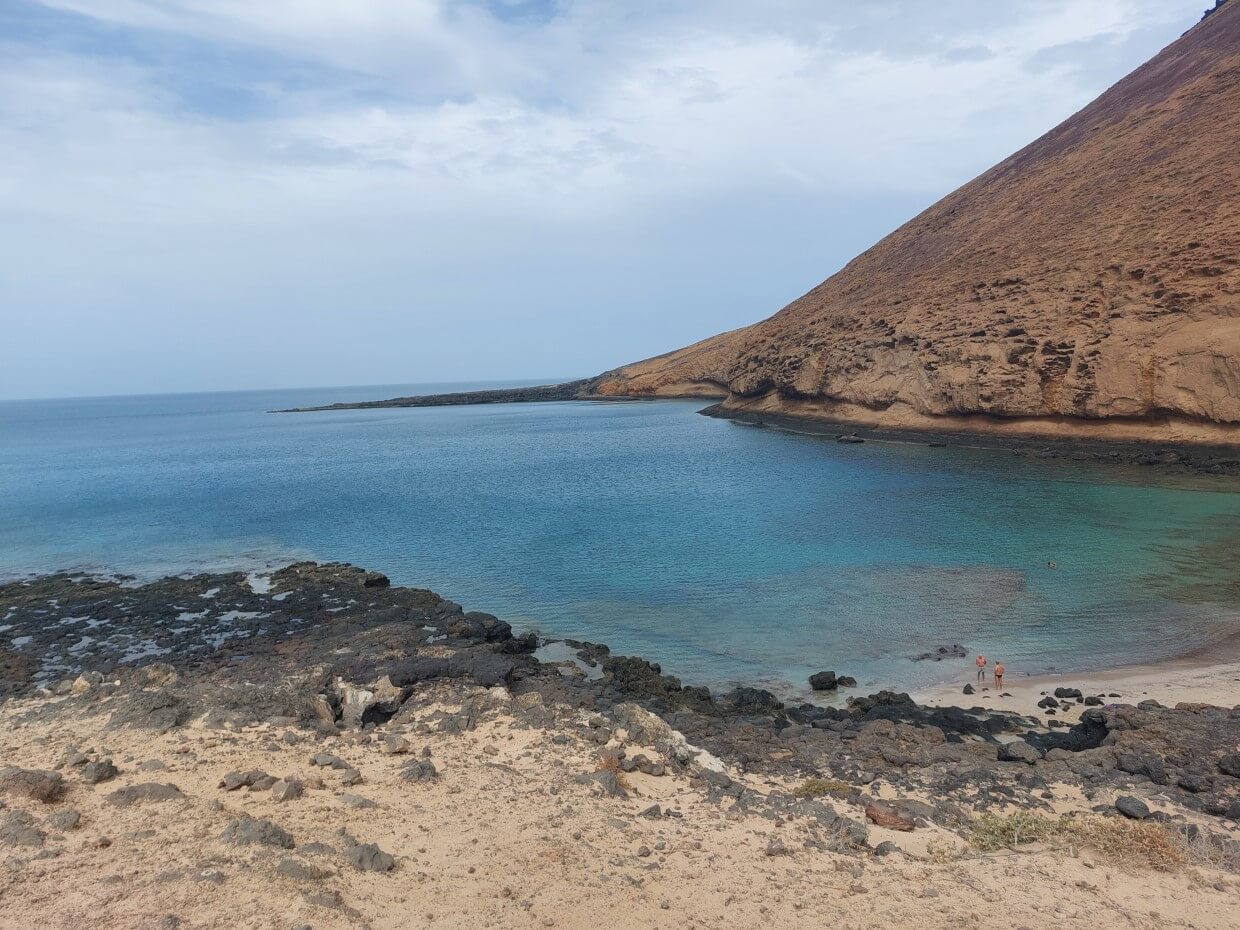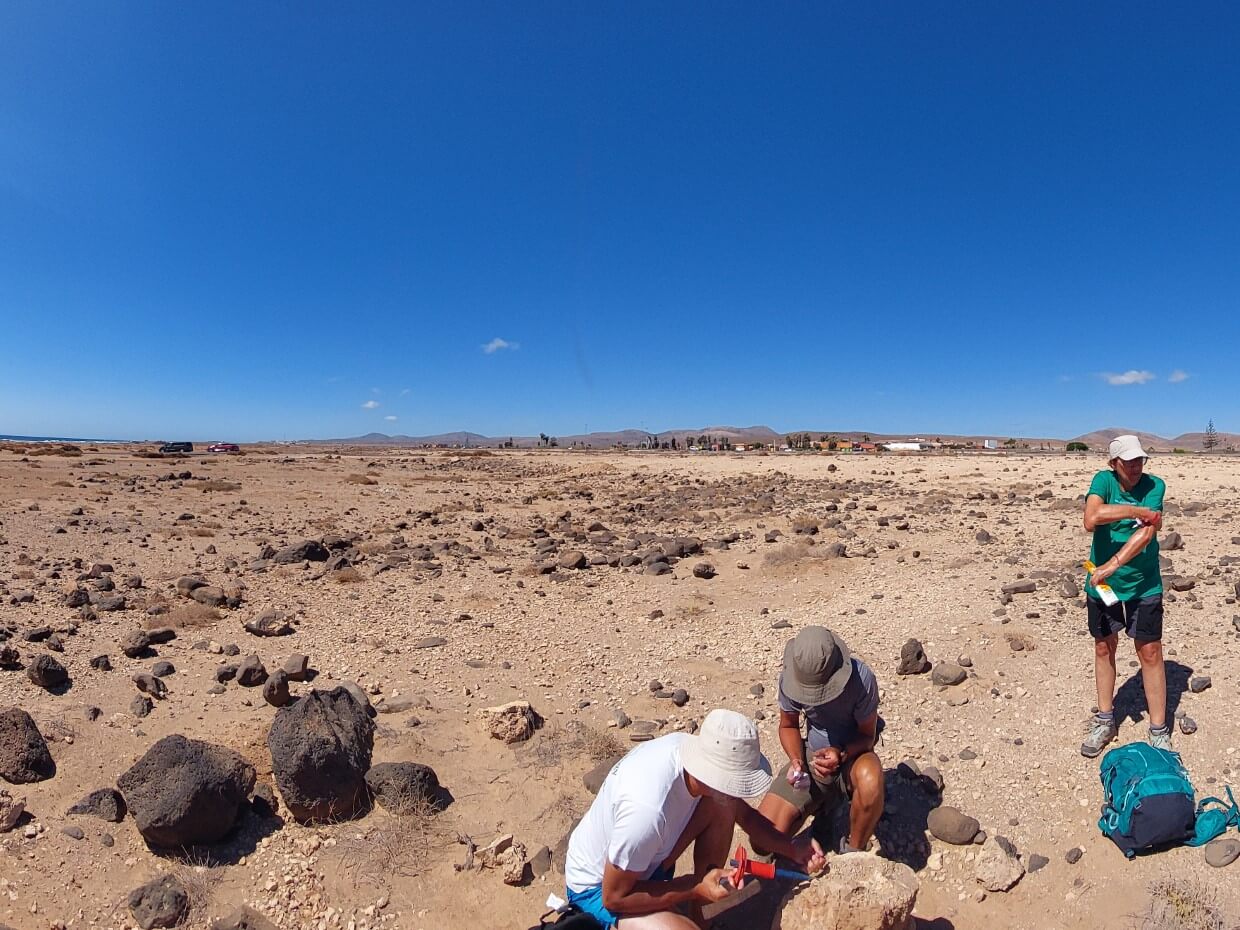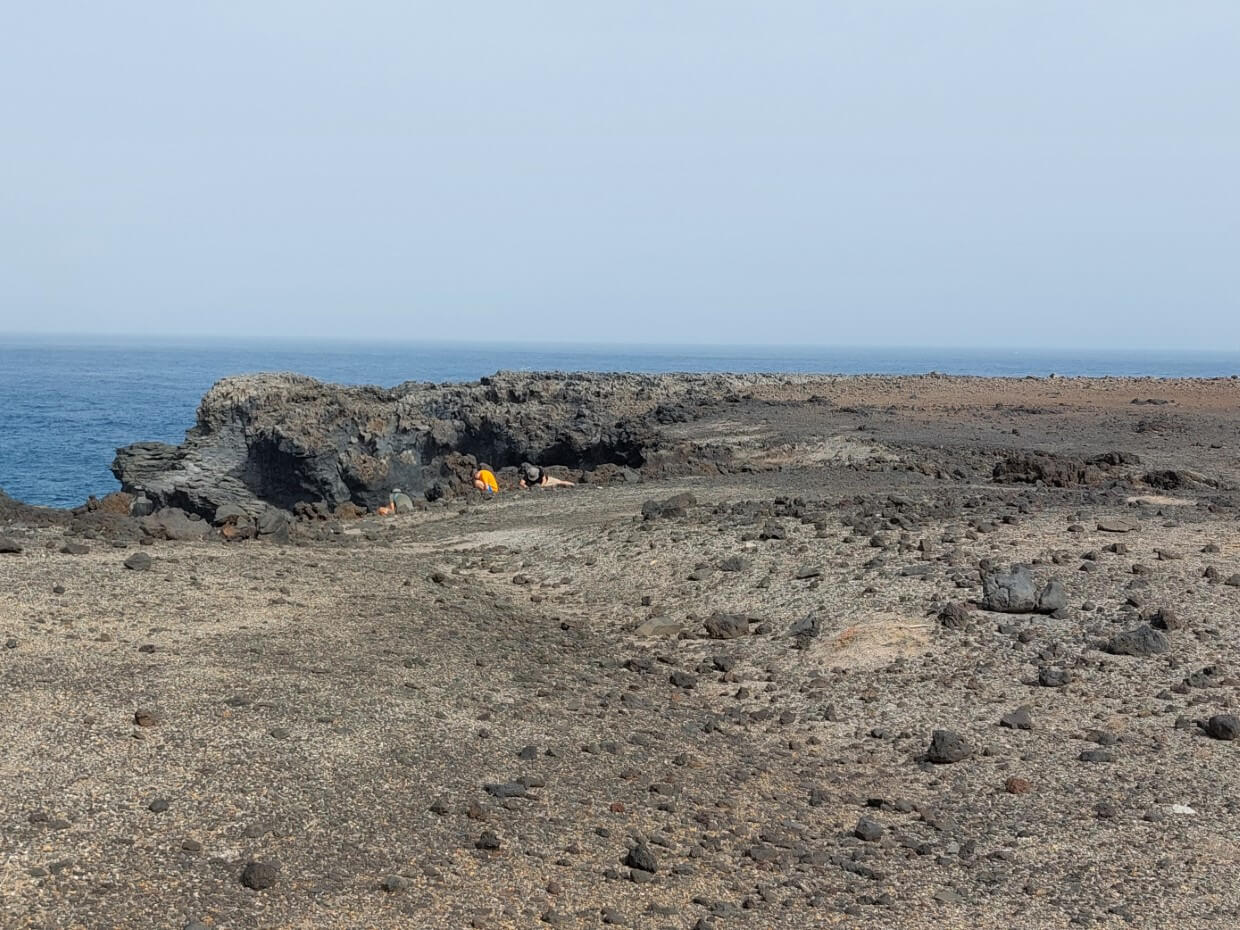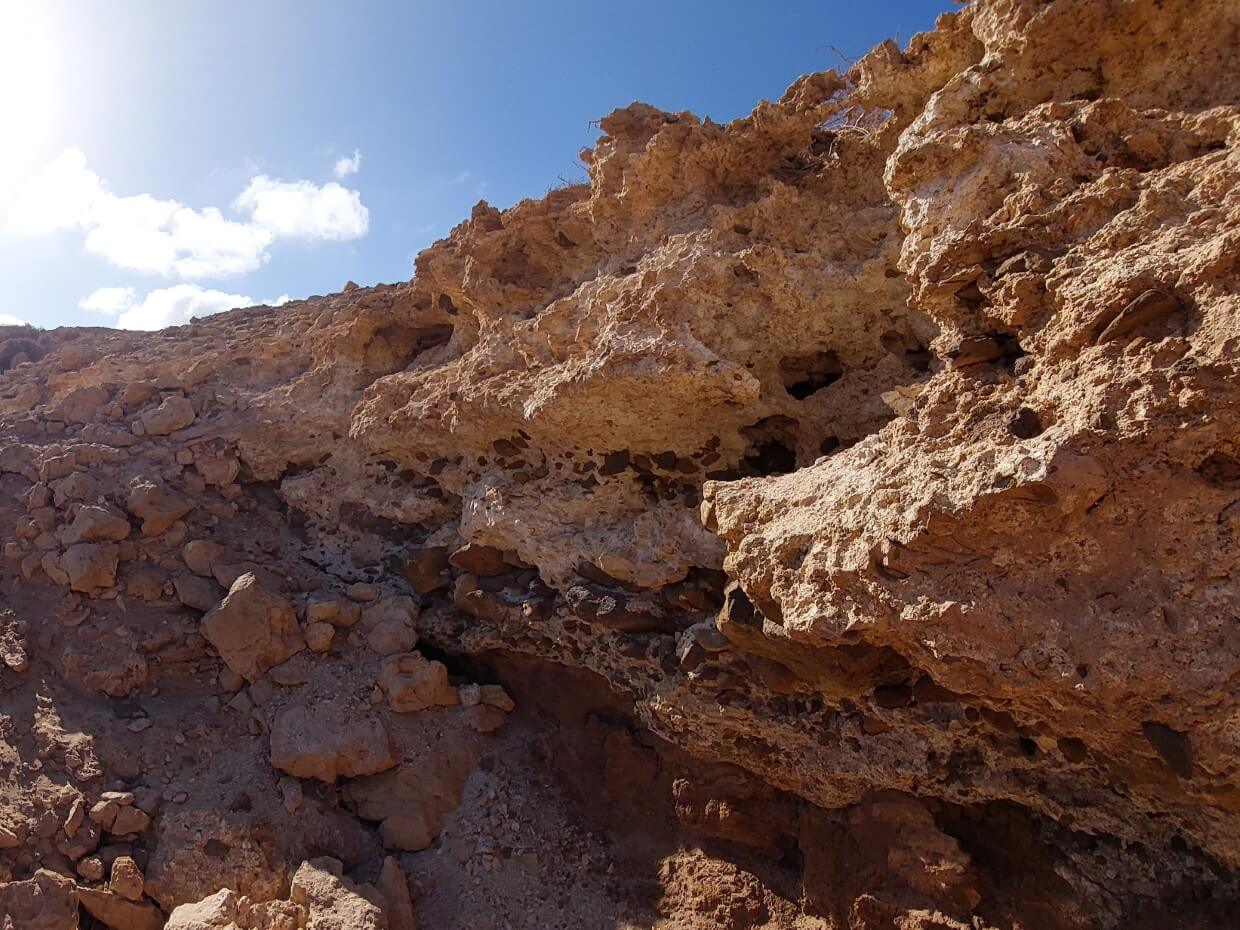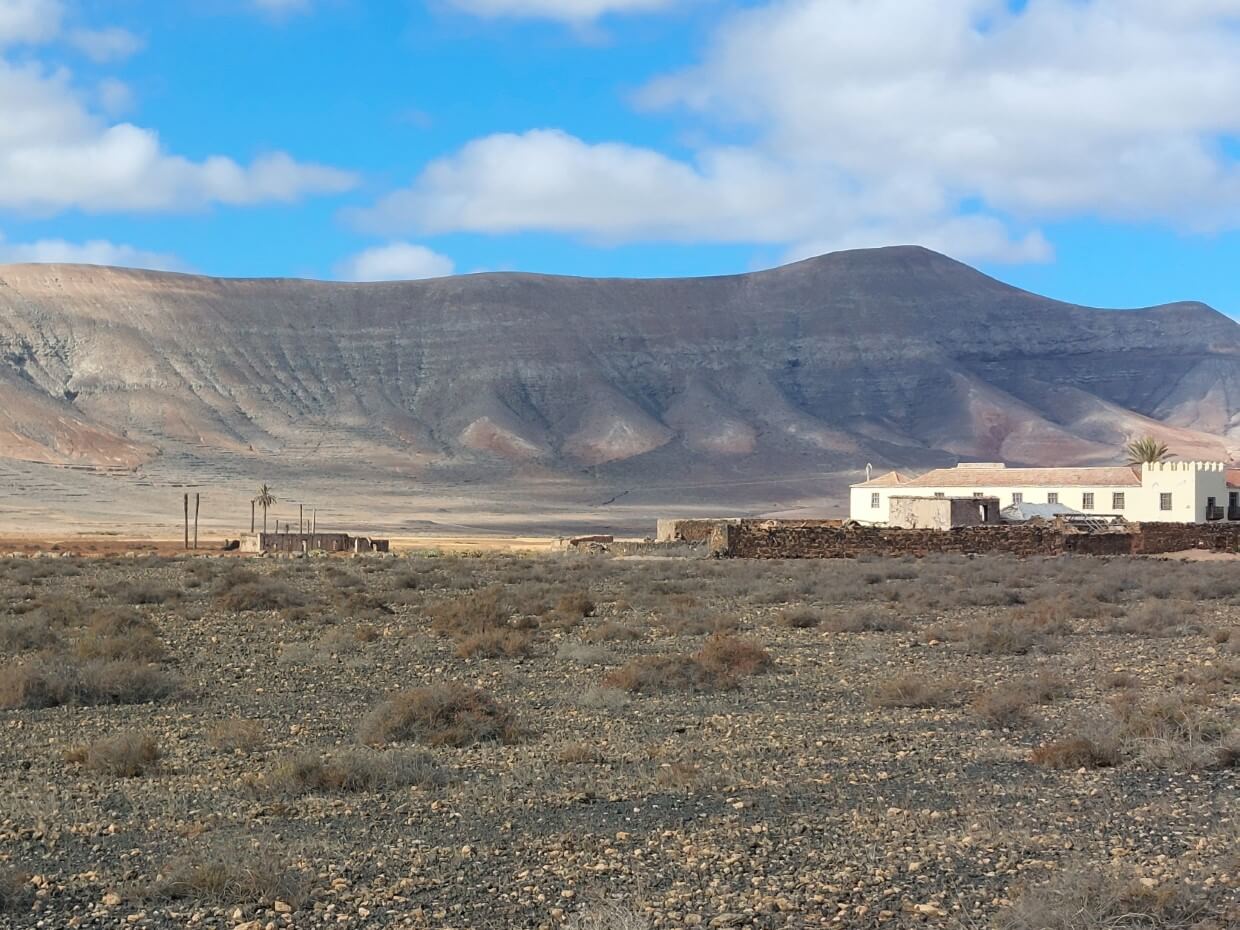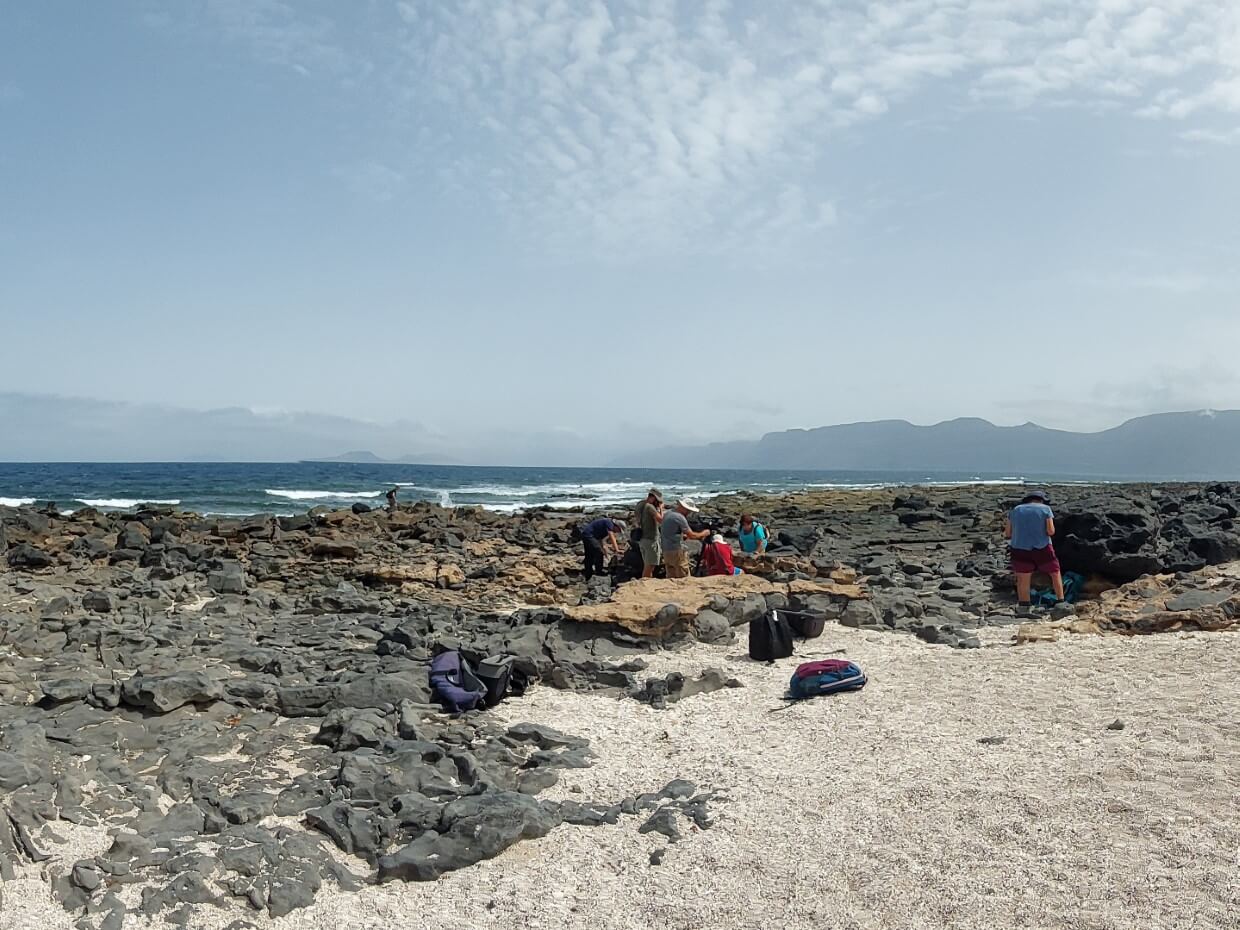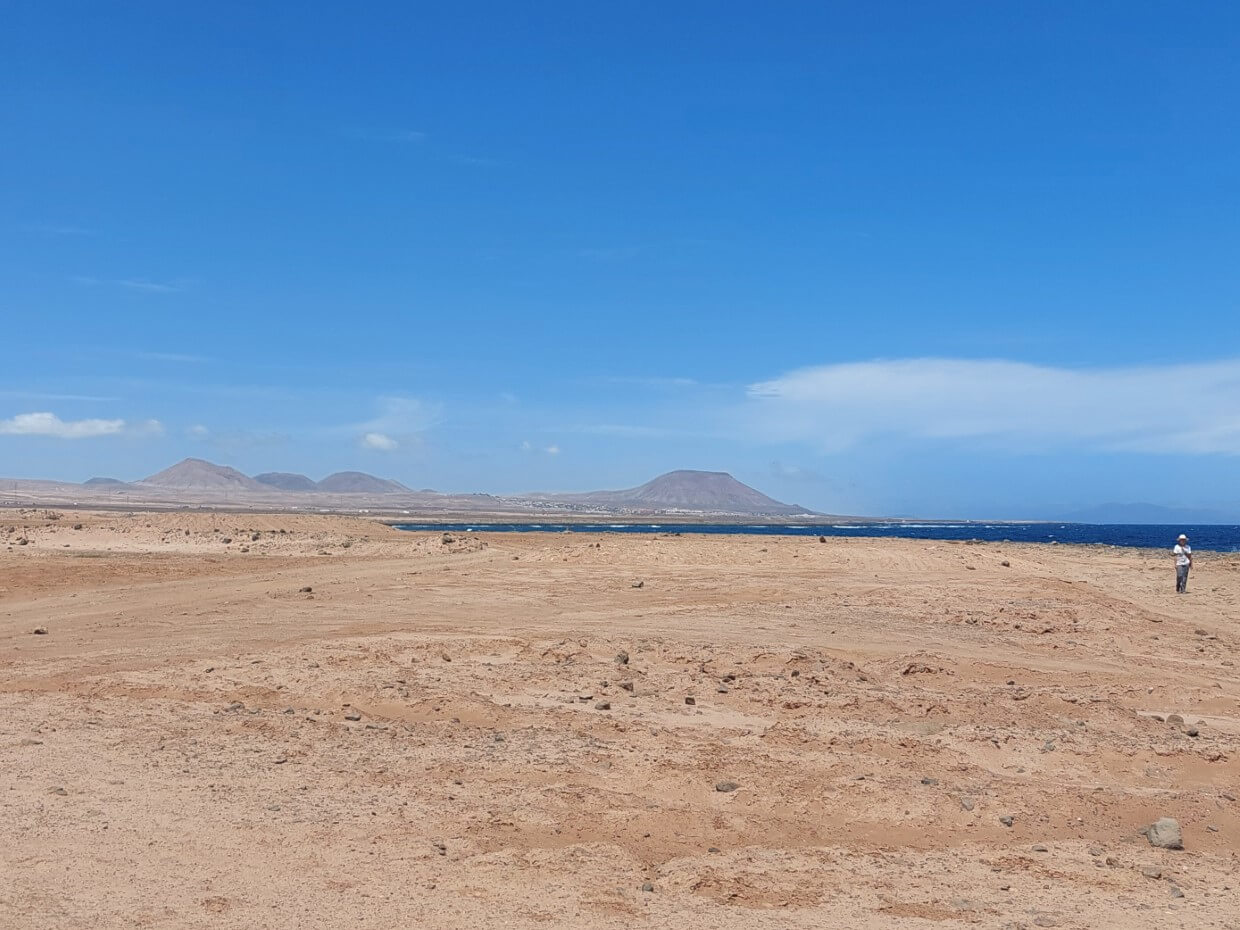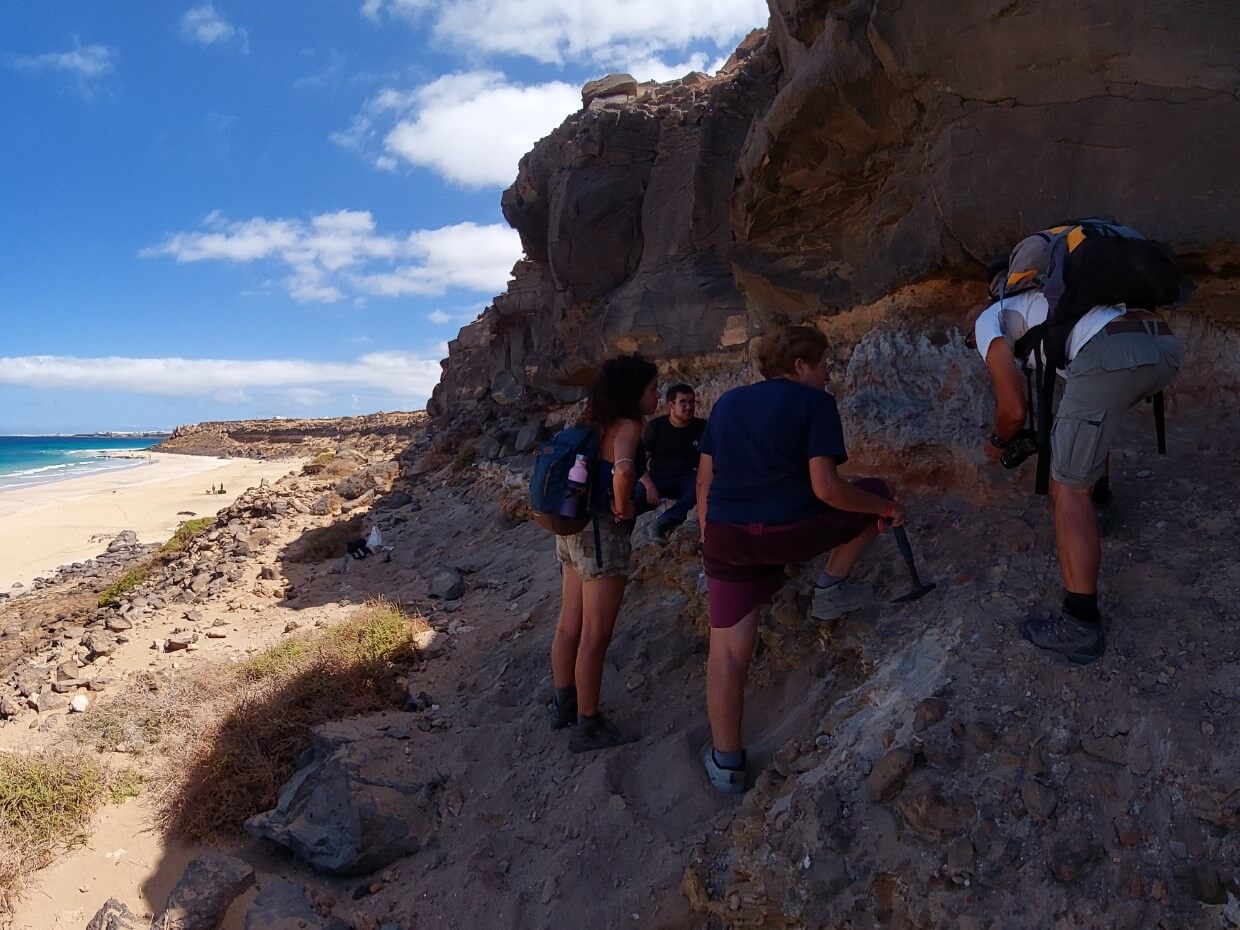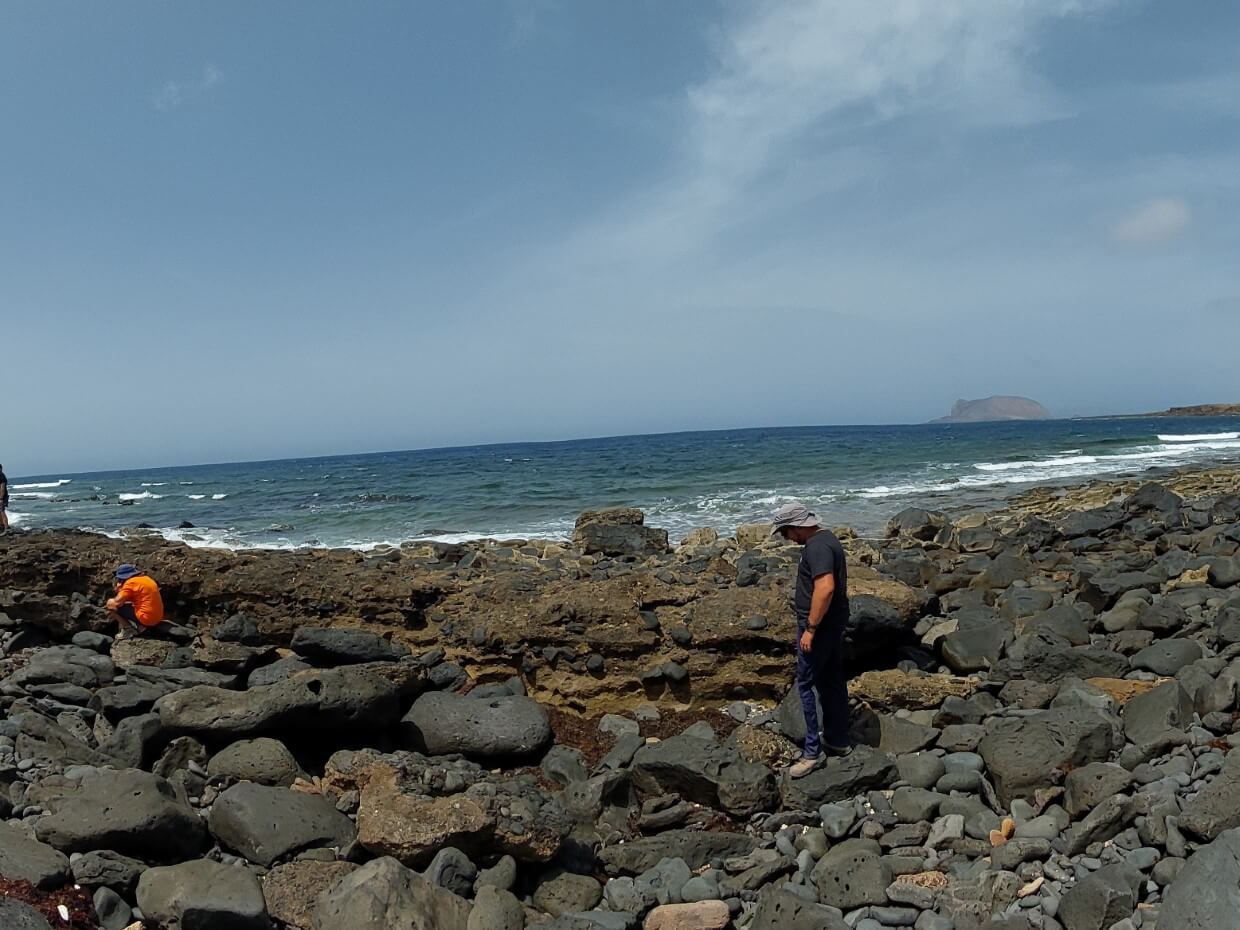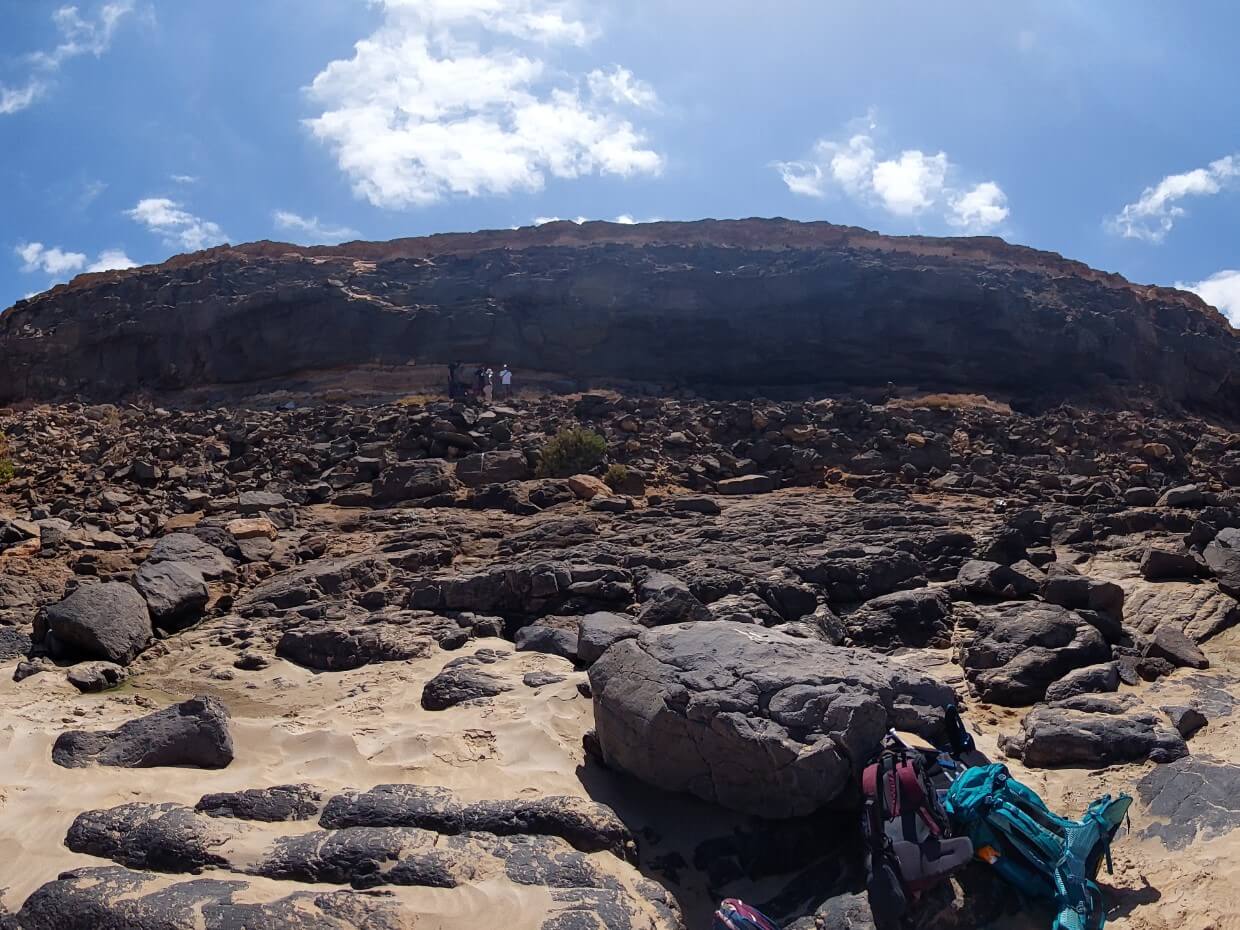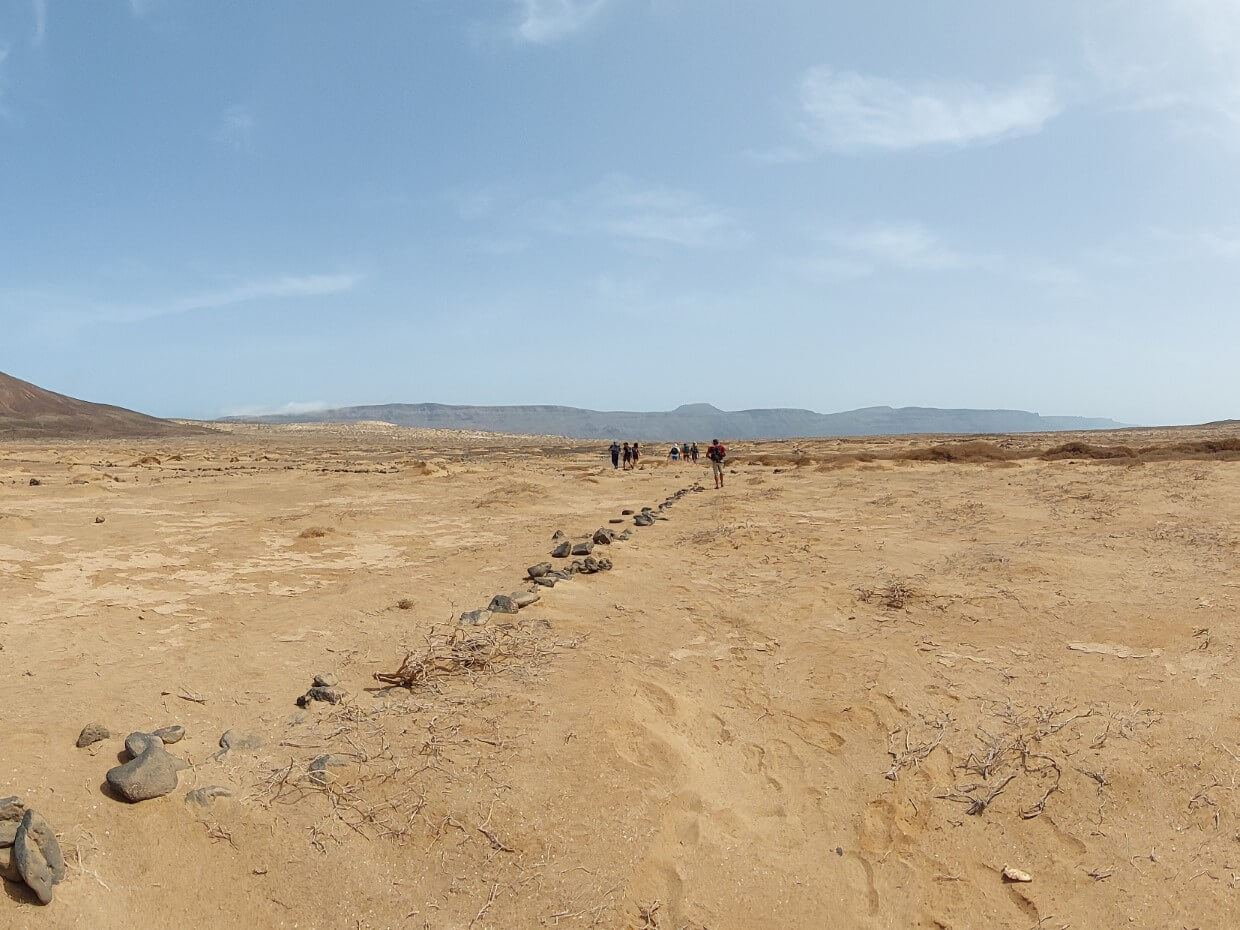Canaries
The Canaries Archipelago corresponds to a set of seven major volcanic oceanic islands and four smaller islands/islets, with the oldest subaerial ages ranging from 23 Ma at Fuerteventura to 1.1 Ma at El Hierro (Bogaard, 2013).
The islands are located close to the African shores (Lanzarote by only ~97 km), between latitudes 27°30’ and 29°24’ N, and longitudes 18°09’ and 13°20’ W. The Canary Islands are the result of Neogene and Quaternary volcanism (Ancochea et al., 2004; King, 2007; Gurenko et al., 2010).
Four of the seven islands present marine fossiliferous deposits, the ages of which range from the Pliocene up to Holocene. As what regards the Pleistocene, there are reported outcrops from the Marine Isotopic Stage 11 (MIS 11, ~400 ky), MIS 9 (~320 ky), and MIS 5e (Zazo et al., 2002; Johnson et al., 2012; Montesinos et al., 2014; Maréchal et al., 2020).
The Last Interglacial fossiliferous deposits are described from altitudes that vary between –0.5 and +2 m (Zazo et al., 2002), which make the use of altimetry as a dating or identification method for the Last Interglacial outcrops difficult to formulate as biostratigraphic indicators.
Explore Canaries Paleobiodiversity Data
Bibliography
ANCOCHEA, E., J.L. BARRERA, F. BELLIDO, R. BENITO, L. BRANDLE, M. CEBRIA, J. COELLO, C.R. CUBAS, J. DE LA NUEZ, M. DOBLAS, J.A. GÓMEZ, F. HERNÁN, R. HERRERA, M.J. HUERTAS, J. LÓPEZ RUIZ, J. MARTÍ, M. MUÑOZ & J. SAGREDO, 2004. Canarias y el Vulcanismo Neógeno peninsular. In: VERA, J.A. (Ed.), Geología de España. SGEIGME, Madrid, pp. 635–682.
BOGAARD, P., 2013. The origin of the Canary Island Seamount Province d new ages of old seamounts. Scientific Reports, 3: 2107.
CARRACEDO, J.C. & V.R. TROLL, 2016. The Geology of the Canary Islands, first ed. Elsevier, Amsterdan, p. 621.
GELDMACHER, J., K. HOERNLE, P. BOGAARD, S. DUGGEN & R. WERNER, 2005. New 40 Ar/39 Ar age and geochemical data from seamounts in the Canary and Madeira volcanic provinces: support for the mantle plume hypothesis. Earth and Planetary Science Letters, 237 (1): 85–101.
GURENKO, A.A., K.A. HOERNLE, A.V. SOBOLEV, F. HAUFF & H.-U. SCHMINCKE, 2010. Source components of the Gran Canaria (Canary Islands) shield stage magmas: evidence from olivine composition and Sr-Nd-Pb isotopes. Contributions to Mineralogy and Petrology, 159: 689–702.
JOHNSON, M.E., GUDVEIG BAARLI, B., M. CACHÃO, C.M. DA SILVA, J. LEDESMA-VÁZQUEZ, E.J. MAYORAL, R.S. RAMALHO & A. SANTOS, 2012. Rhodoliths, uniformitarianism, and Darwin: Pleistocene and Recent carbonate deposits in the Cape Verde and Canary archipelagos. Palaeogeography, Palaeoclimatology, Palaeoecology, 329–330: 83–100.
KING, S.D., 2007. Hotspots and edge-driven convection. Geology, 35 (3): 223–226.
MARÉCHAL, C., A., BOUTIER, M.-A. MÉLIÈRES, T. CLAUZEL, J.F. BETANCORT, A. LOMOSCHITZ, J. MECO, F. FOUREL, A. BARRAL, R. AMIOT & C. LÉCUYER, 2020. Last interglacial Sea Surface warming during the Sea-level highstand in the Canary Islands: implications for the canary current and the upwelling off African coast. Quaternary Science Reviews, 234: 106246.
MONTESINOS, M., A.J.G. RAMOS, A. LOMOSCHITZ, J. COCA, A. REDONDO, J.F. BETANCORT & J. MECO, 2014. Extralimital Senegalese species during marine isotope stages 5.5 and 11 in the Canary Islands (29° N): Sea Surface temperature estimates. Palaeogeography, Palaeoclimatology, Palaeoecology, 410: 153–163.
ZAZO, C., J.L. GOY, C. HILLAIRE-MARCEL, P.Y. GILLOT, V. SOLER, J.A. GONZÁLEZ, C.J. DABRIO & B. GHALEB, 2002. Raised marine sequences of Lanzarote and Fuerteventura revisited e a reappraisal of relative sea-level changes and vertical movements in the eastern Canary Islands during Quaternary. Quaternary Science Reviews, 21: 2019–2046.
How to cite:
MPDb (2023). Canaries. Macaronesian Palaeobiodiversity Database. https://macpaleo.uac.pt/

